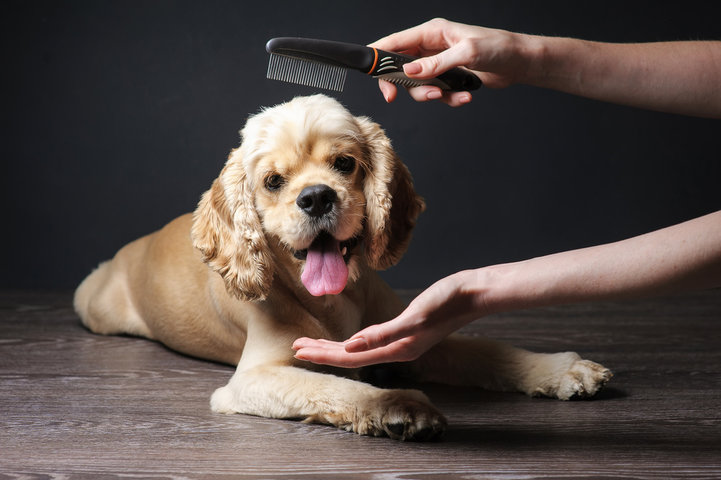
Why Puppies Need Grooming
Keeping a dog well-groomed is essential for their long-term health. Routine grooming involves coat brushing, bathing, nail trims, and dental care. Long-haired dogs need to be comfortable with hair trimming, and dogs with long or floppy ears benefit from routine ear cleaning.
No matter the breed, creating positive associations with grooming procedures as early as possible is vital. If your puppy is up to date with their vaccinations, aim to take them to a professional groomer by 12 to 14 weeks of age. Puppies can form positive associations with new experiences more easily before they reach four months of age, so don’t wait until after their final vaccines.
Breeds with long or curly hair, like Maltese, Yorkies, Poodles, and Doodles, may need professional grooming even earlier to prevent their hair from becoming too long and matted.
Pet parents who are comfortable with brushing, bathing, nail trimming, and teeth brushing can perform most of these procedures at home. However, involving a professional groomer in your puppy’s socialization is a great idea in case they need professional grooming as adults.
Benefits of Grooming Your New Puppy
Grooming is a critical part of dog hygiene. The primary goal of grooming is to keep the skin, nails, and teeth healthy and clean. A coat that is not properly maintained can become matted, leading to skin infections and loss of circulation. Good oral hygiene helps prevent heart and kidney damage. Nails that grow too long can break painfully and may even grow back into a dog’s paw pads.
There are also emotional benefits to good grooming. When introduced properly, grooming can be a calming activity for both you and your dog. Grooming in animals is a social activity and provides an opportunity to conduct a detailed inspection of your dog, often uncovering ear infections, bumps, scabs, or parasites like fleas that need a vet’s attention.
How Often Do Puppies Need to Be Groomed?
The frequency of professional grooming for a puppy depends on several factors. More frequent trips (every two to three weeks) may be beneficial for young puppies (under 6 months) to establish positive routines, even if not strictly necessary for hygiene.
For the average adult dog, a routine of every four to six weeks for bathing, nail trims, and haircuts (if needed) is reasonable. Even short-haired dogs should be brushed at least weekly between grooming appointments, while dogs with long, flowing, or curly hair may require daily brushing to avoid matting.
Your groomer can help you determine the right grooming regimen for your dog based on their breed and lifestyle.
Tips for Grooming Your New Puppy Finding a Pet Groomer
Finding a groomer you trust is important because your puppy may spend a lot of time with them. Look for reviews online and ask for recommendations from friends, family, and your vet. Ensure the grooming facility has convenient hours and locations.
Visit the facility before making an appointment to ensure it is clean and well-maintained. Ask to see where dogs are kept between appointments and pick-up times. Some groomers may allow you to watch them work. If you need breed-specific cuts, ask about the groomer’s experience with those standards. Having vaccination requirements (rabies, DHPP, and kennel cough) is a good sign that the groomer is invested in dog care and well-being.
Preparing for Grooming
Lay some groundwork with your puppy before their first appointment. Make sure they are comfortable being handled, especially their nose, ears, belly, and feet. This training is best done with frequent, short sessions involving praise and treats.
On the day of the appointment, keep things low-key. Avoid long goodbyes and try not to be too excited when picking up your puppy. Treat the experience as routine to help your puppy feel more relaxed.
Inform the groomer of any nervous behaviors your puppy might have and ask for feedback on how they did. You can use this information to help your puppy feel more comfortable for future visits. If your puppy remains anxious about grooming, seek advice from your vet.
By following these guidelines, you can help make grooming a positive and stress-free part of your puppy’s life.